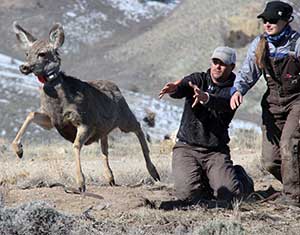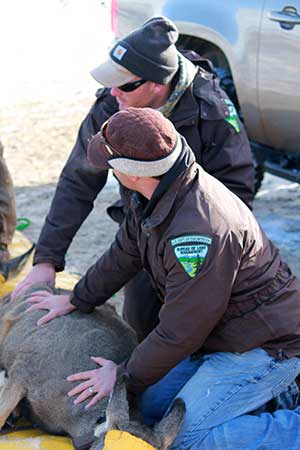Wyoming Diversity Partners
BLM Wyoming currently has a close working relationship with Wyoming Workforce Agency and the Department of Veterans Affairs throughout the state of Wyoming. The Human Resources (HR) Branch recruits through these agencies to identify Special Hiring Authority candidates such as Veterans' Recruitment Appointments, Veterans Employment Opportunity Act candidates, 30% or More Disabled Veterans and Schedule A Appointing Authority applicants.
In addition, BLM Wyoming is committed and has placed employees through the Department of Interior's Direct Hire Authority for Resource Assistant Internships (DHA-RAI) recruiting. The DHA-RAI program targets college students and recent graduates, with particular attention given to ensure full representation of women and participants from Minority Servicing Institutions-Historically Black, Hispanic, Asian Pacific Islander and American Indian) or other schools with diverse student populations. The Wyoming HR Branch recruits at both two- and four-year colleges in the region as an outreach effort to expand diversity to its workforce.

collared deer.
Photo taken by Matthew Kauffman.
Featured Partnership
Mark Thonhoff, a wildlife biologist in the Pinedale Field Office, had a unique opportunity to work on the Wyoming Migration Initiative this winter to study migration routes of mule deer. The Wyoming Migration Initiative is partnership between the University of Wyoming, the Wyoming Game and Fish and BLM. Its goal is: Advancing the understanding, appreciation, and conservation of Wyoming's migratory ungulates by conducting innovative research and sharing scientific information through public outreach.

collared.
Photo by Mark Thonhoff.
“I was involved with the Red Desert to Hoback Migration assessment to identify potential areas of concern along the migration route. Information gathered from collared mule deer provides vital information about habitat use and migration patterns,” Thonhoff said. The team discovered that this route is the longest ungulate migration ever recorded in the lower 48. Mule deer travel 150 miles from the Red Desert to Hoback Basin and surrounding mountain ranges. He said that BLM will use the research from the Red Desert to Hoback Mule Deer Migration to identify crucial habitat that can then be used in NEPA planning. Similar efforts occurring throughout the state are providing valuable information about the movements of bighorn sheep, pronghorn antelope, moose, and elk. Another unique aspect of this winter’s trapping is the researchers used social media by live-tweeting during the capture and release of the various animals. For more information, go to http://migrationinitiative.org/
